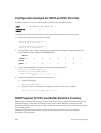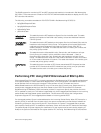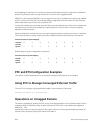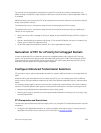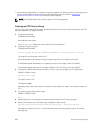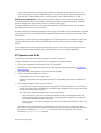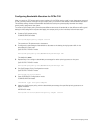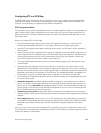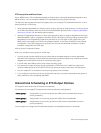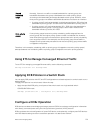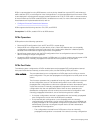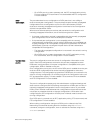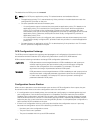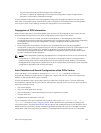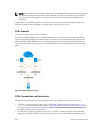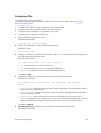
ETS Prerequisites and Restrictions
On an S6000 switch, ETS is enabled by default on Ethernet ports with equal bandwidth assigned to each
802.1p priority. You can change the default ETS configuration only by using a DCB map.
The following prerequisites and restrictions apply when you configure ETS bandwidth allocation or strict-
priority queuing in a DCB map:
• When allocating bandwidth or configuring strict-priority queuing for dot1p priorities in a priority group
on a DCBx CIN interface, take into account the CIN bandwidth allocation (see Configuring Bandwidth
Allocation for DCBx CIN) and dot1p-queue mapping.
• Although ETS bandwidth allocation or strict-priority queuing does not support weighted random early
detection (WRED), explicit congestion notification (ECN), rate shaping, and rate limiting because these
parameters are not negotiated by DCBx with peer devices, you can apply a QoS output policy with
WRED and/or rate shaping on a DCBx CIN-enabled interface. In this case, the WRED or rate shaping
configuration in the QoS output policy must take into account the bandwidth allocation or queue
scheduler configured in the DCB map.
Priority-Group Configuration Notes
When you configure priority groups in a DCB map:
• A priority group consists of 802.1p priority values that are grouped together for similar bandwidth
allocation and scheduling, and that share the same latency and loss requirements. All 802.1p priorities
mapped to the same queue must be in the same priority group.
• In a DCB map, each 802.1p priority must map to a priority group.
• The maximum number of priority groups supported in a DCB map on an interface is equal to the
number of data queues (4) on the port. Each priority group can support more than one data queue.
• You can enable PFC on a maximum of two priority queues on an interface.
• If you configure more than one priority group as strict priority, the higher numbered priority queue is
given preference when scheduling data traffic.
Hierarchical Scheduling in ETS Output Policies
ETS supports up to three levels of hierarchical scheduling.
For example, you can apply ETS output policies with the following configurations:
Priority group 1 Assigns traffic to one priority queue with 20% of the link bandwidth and strict-
priority scheduling.
Priority group 2 Assigns traffic to one priority queue with 30% of the link bandwidth.
Priority group 3 Assigns traffic to two priority queues with 50% of the link bandwidth and strict-
priority scheduling.
In this example, the configured ETS bandwidth allocation and scheduler behavior is as follows:
270
Data Center Bridging (DCB)



